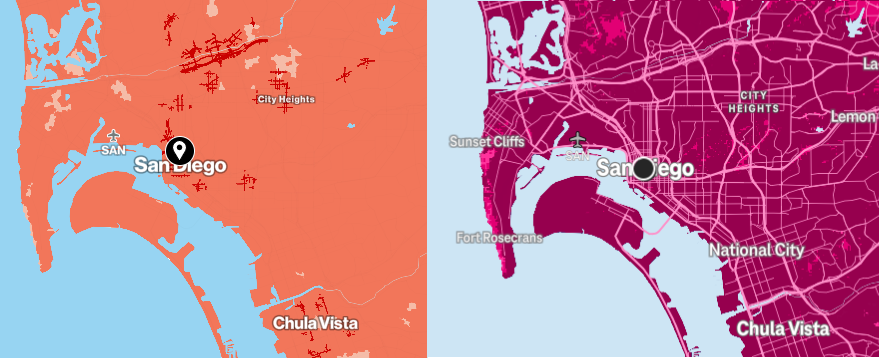There is a 3 way race for 5G leadership in the US between T-Mobile(+Sprint), Verizon and AT&T. There are competing claims for the number of 5G subscribers, coverage area and download speeds. But let us look where the 5G industry stands today compared to the expectations a few years back. More than 80% of US population lives in urban areas which comprise of 2% of the total land area of about 10 million squared kilometers. That is 80% of the population lives in an area of about 200,000 squared kilometers.
According to the white papers and research papers published on 5G, the density of 5G network would need to be more than 40 towers per squared kilometer, for the capacity targets to be achieved. Let us use a conservative estimate of 10 towers per squared kilometer. That is the total number of towers required to serve urban areas in the US would have to be in access of 2 million (200,000 x 10). According to studies conducted the total number of 5G towers operational in the US is 100,000 i.e. only 5% of the required number. And another point to be noted is that unless carriers are using tower sharing the number of required towers would be even greater than 2 million.
It must be noted that true potential of 5G will only be realized once the carriers move to millimeter wave bands (extremely large bandwidths and shorter range like wifi) but this seems to be a long term strategy. In the short term operators are focusing on mid-band frequencies (below 6GHz) that are available and for which technology is ready. In particular T-Mobile played a clever hand by acquiring Sprint which already had a mid-band frequency of 2.5GHz allocated to it. This helped T-Mobile quickly roll out 5G across the US but other carriers are catching up by making installations in the C-Band (3.7GHz).
It must also be noted that there are some concerns about 5G signals interfering with aircraft’s radio altimeter but T-Mobile claims that it is immune to this problem as its allocated band of 2.5 GHz is quite far from the operating frequency of an altimeter. According to FAA 5G statement issued on January 28, 2022 “Through continued technical collaboration, the FAA, Verizon, and AT&T have agreed on steps that will enable more aircraft to safely use key airports while also enabling more towers to deploy 5G service”. So clearly problem is with Verizon and AT&T and not T-Mobile.

Lastly, as can be seen above from the sample area of San Diego California, Verizon 5G Ultra Wideband (left) has very limited coverage. On the other hand T-Mobile 5G Ultra Capacity is available in most of the sample area (right). But the above must be taken with a pinch of salt as these maps are being continuously updated as the networks are being upgraded and then there are also some marketing gimmicks at play here. Peak speed exceeding 1Gbps is a rare occurence and happens only in urban city centres.
Note:
1. In China 1 million base stations have been installed i.e. 1 base station per 1500 people.
2. In USA 100,000 base stations have been installed i.e. 1 base station per 3300 people.
One thought on “5G Rollout in the USA: Long Way to Go”
can i calculate power density from RSSI,…..and other drive test data?